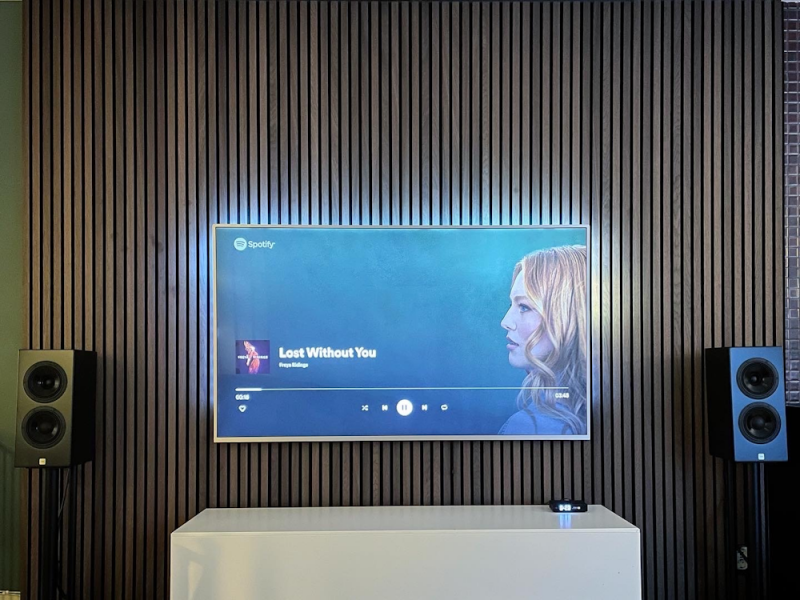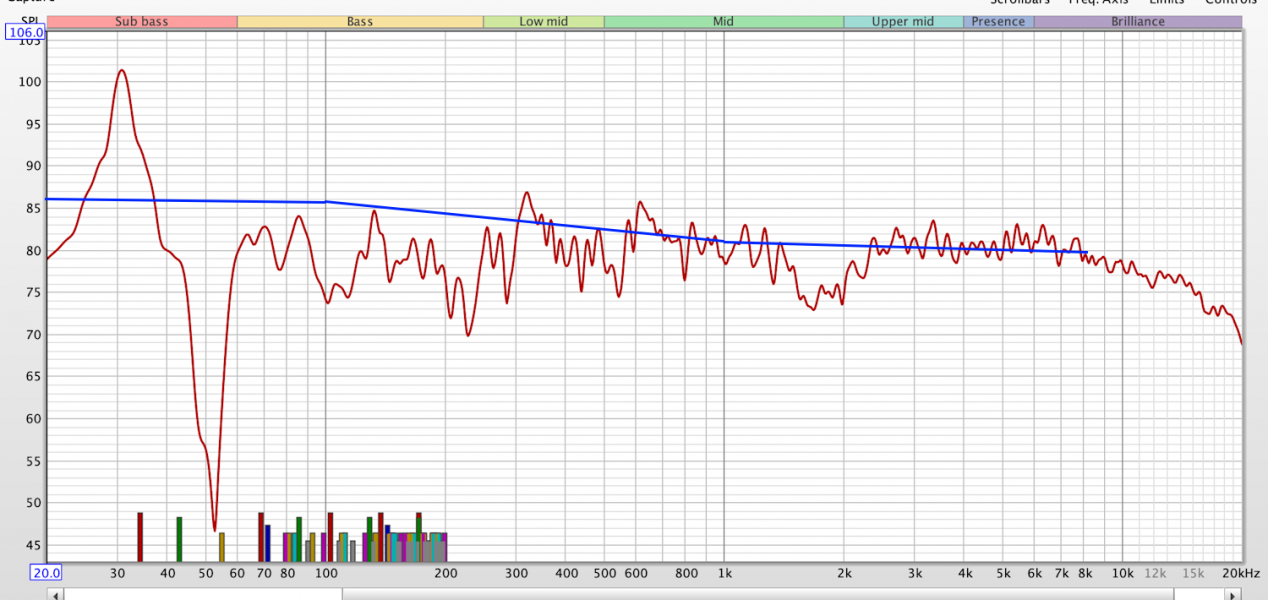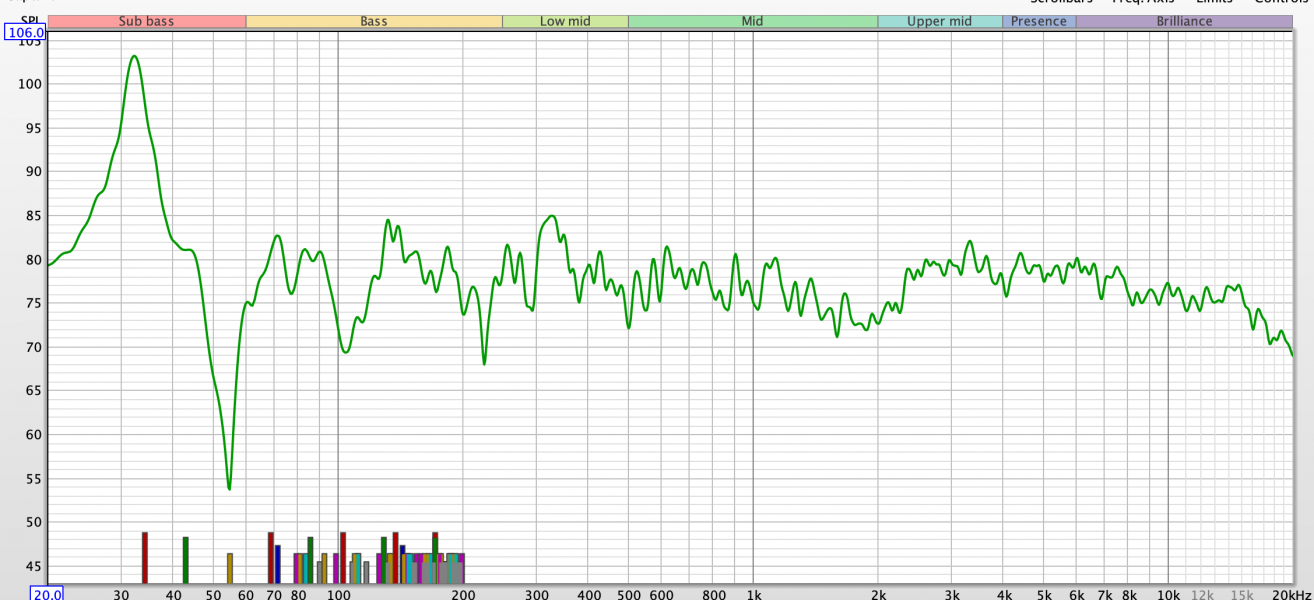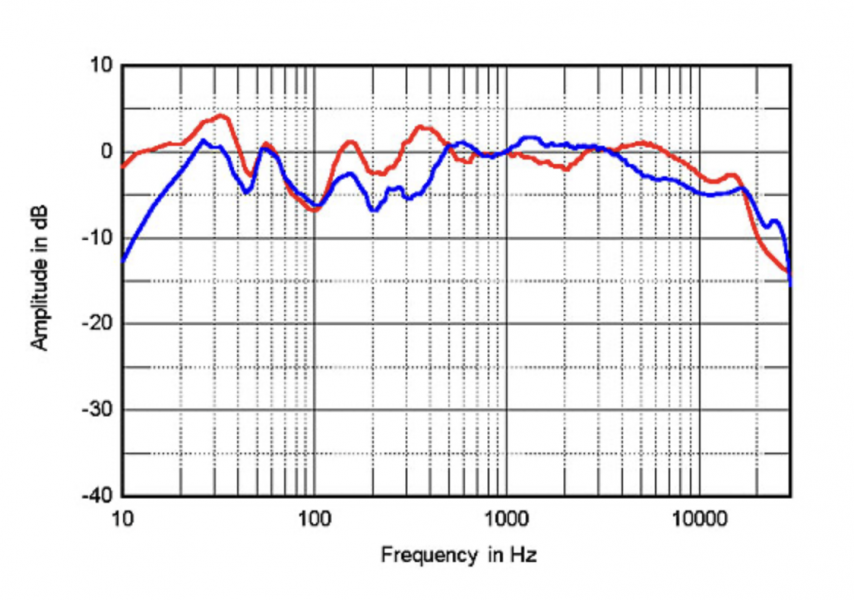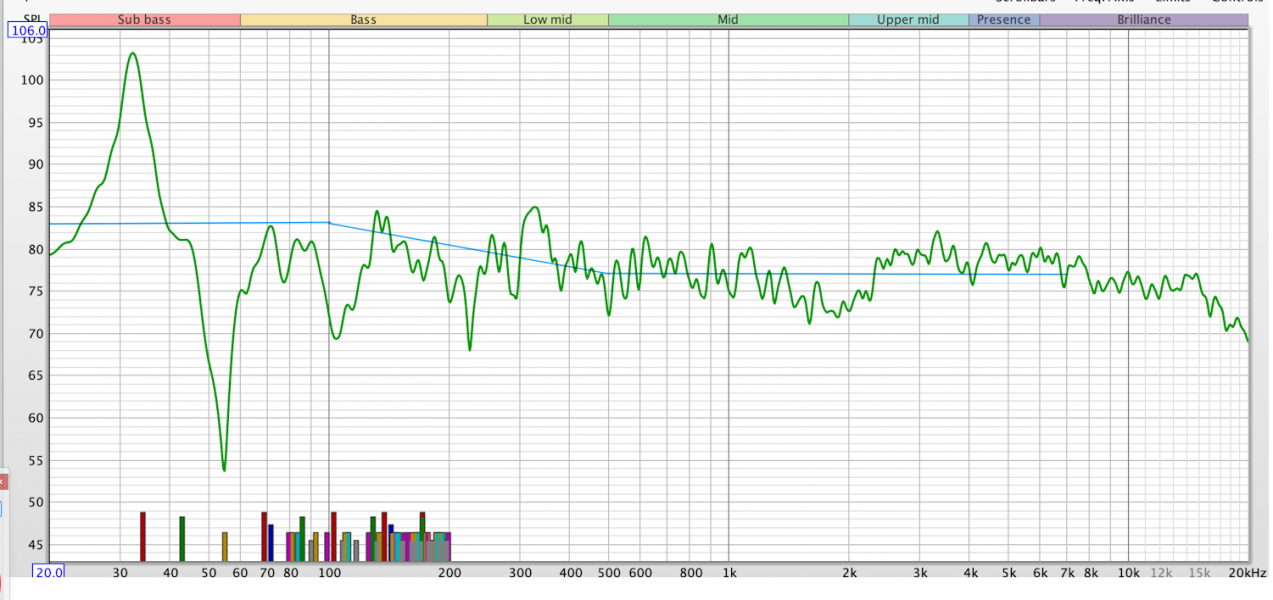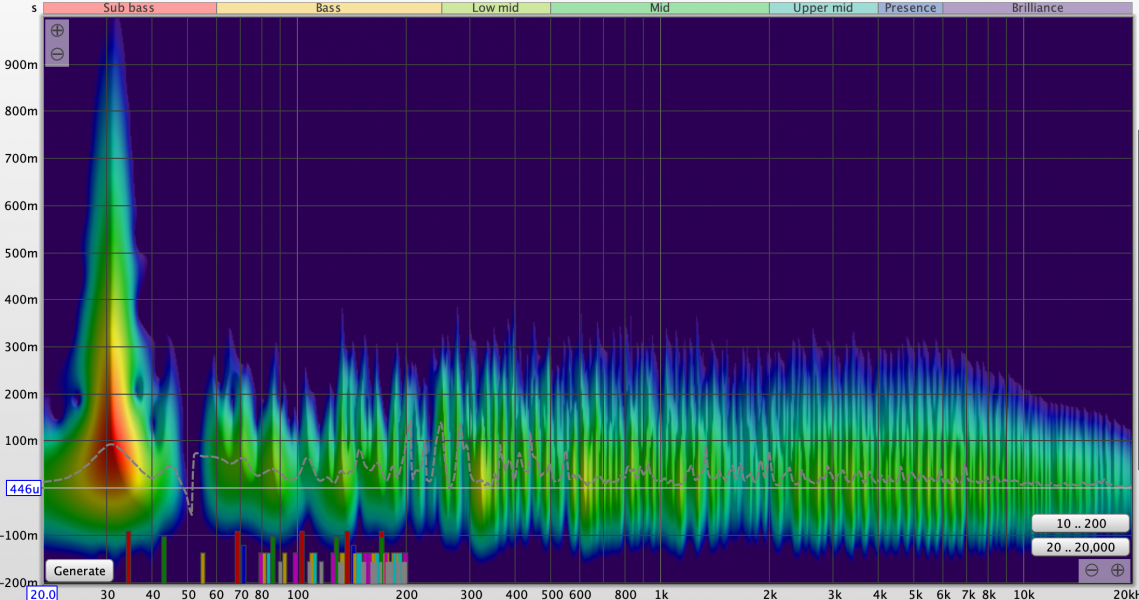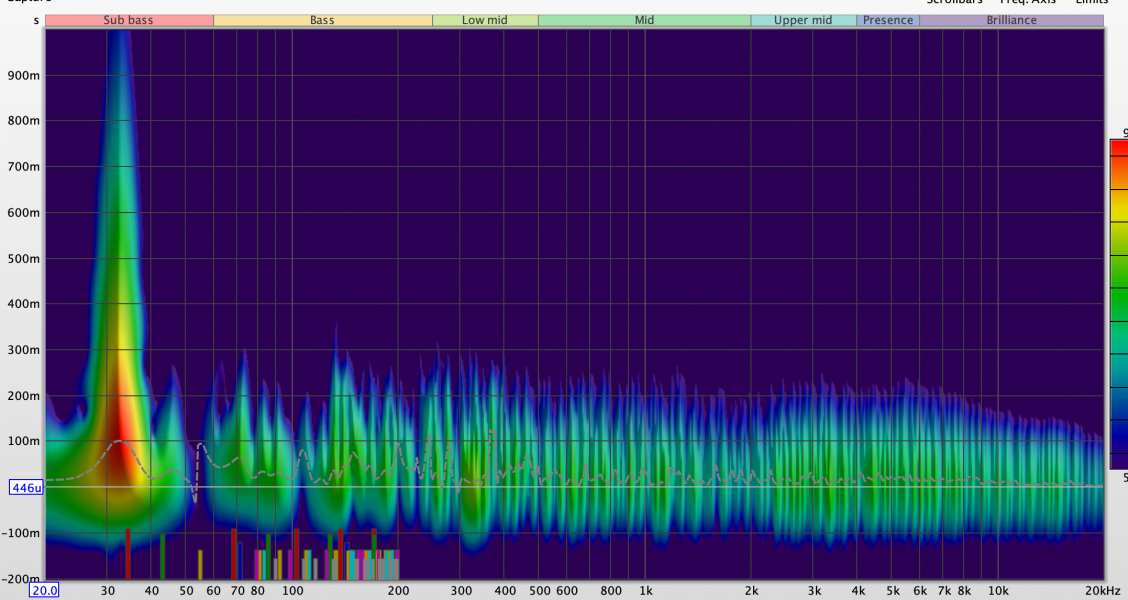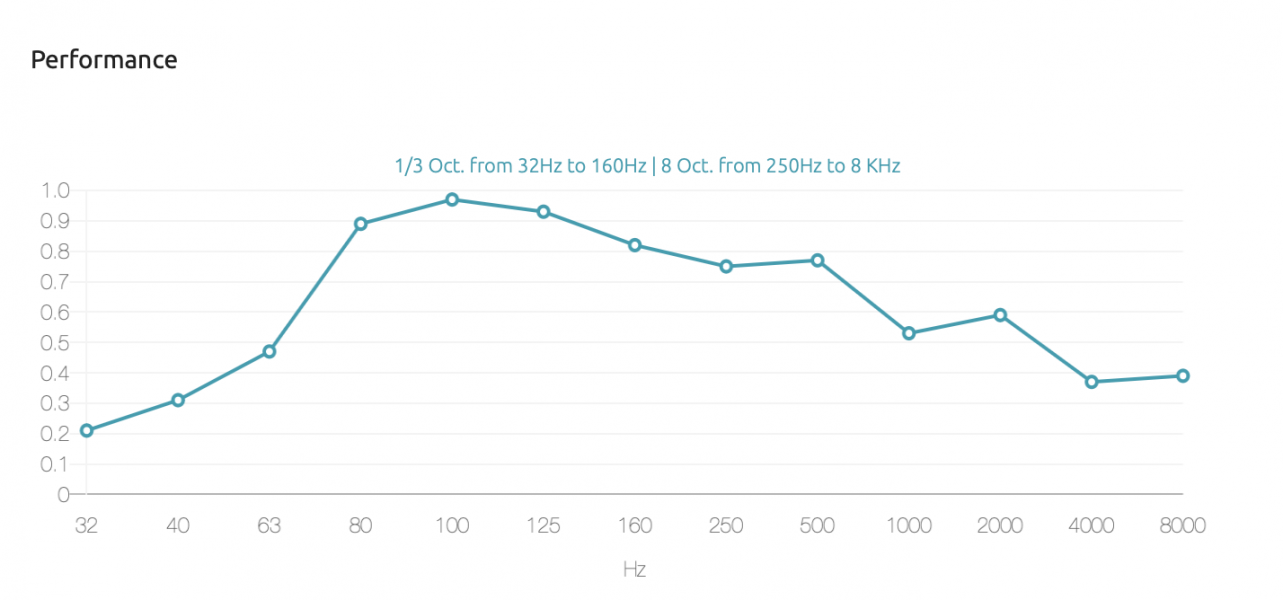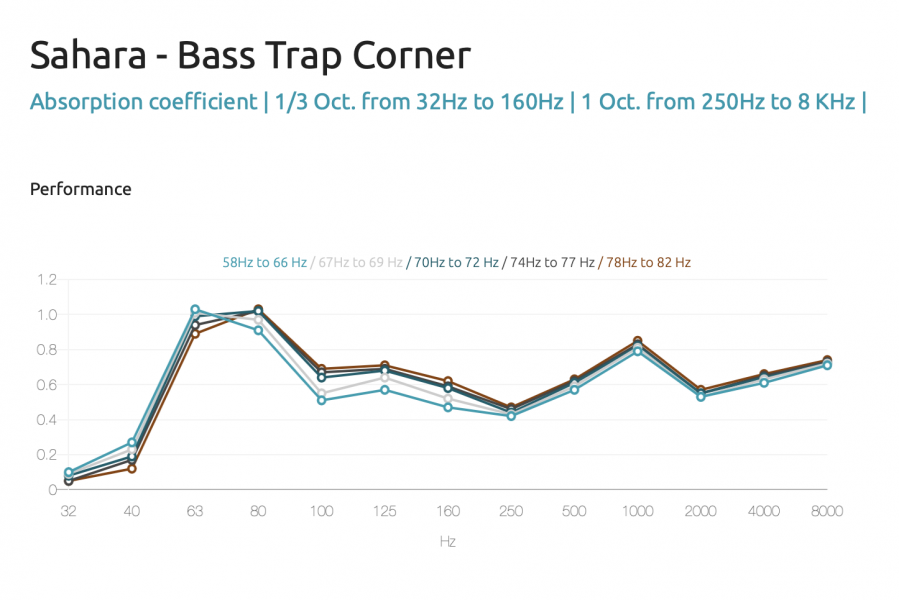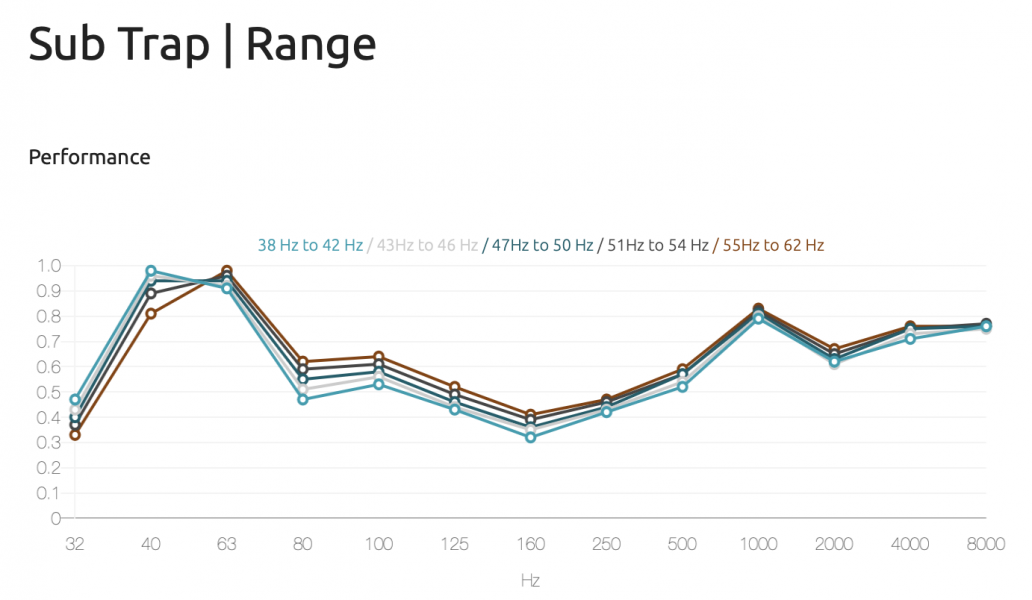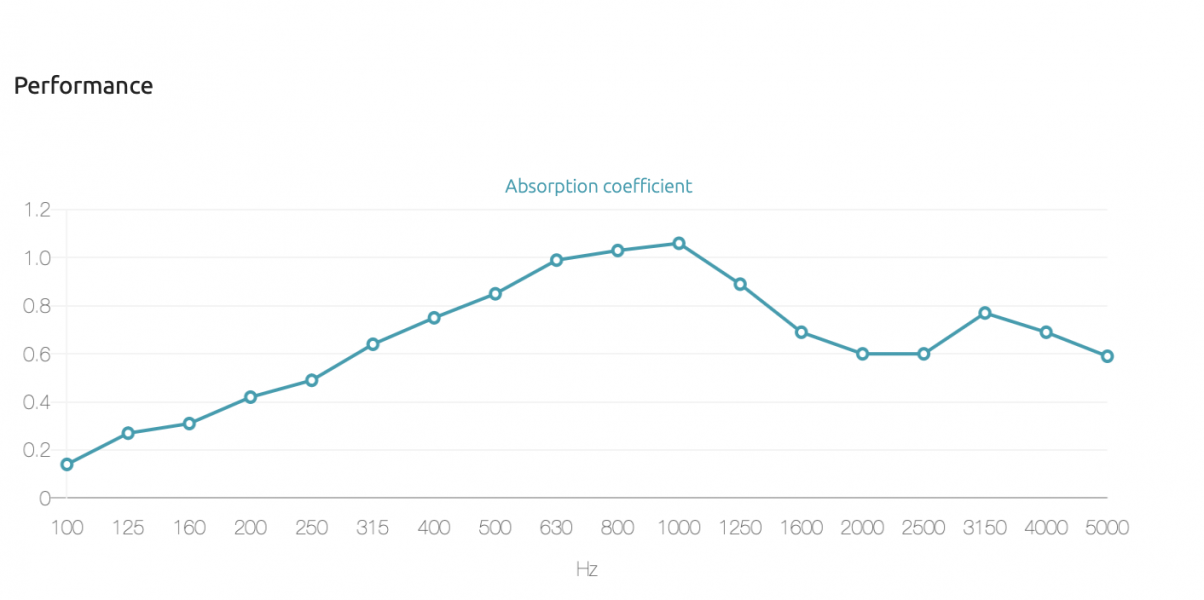My congratulations for the very nice tastefully decorated room. The YG speakers should sound very good.Hi to everybody ! I recently moved into a new apartment, and installed my system in the main room.
But of course all speakers can only sound as good as the room acoustics allow. My opinion.
1. room modes
In the frequency response (left or right speaker?) there is a peak (+20dB) at about 30Hz and a heavy dip (-30dB) at about 50Hz.
A loudspeaker is placed in the corner of the room (left) and thickens the bass. The other (right) has a door in the back and should have very little bass.
2. reverberation
This one is very high. This is not surprising given the many reverberant surfaces (floor-to-ceiling windows, TV) and the less furniture. I prefer a reverberation of 0.4 sec., 0.6 sec. should generally not be exceeded.
3. symmetry
In rooms it is important to get as much direct sound as possible in "equal proportions" from left and right. Otherwise there will be no phantom center and no stage in depth and width.
This setup is unfortunately very unsymmetrical to the walls. On the left, the window that creates diffuse sound. On the right, no wall, but a large dining table, which reflects the sound totally differently.
Proposed solutions
The solution shown with perforated absorbers and diffusers and the curtains will certainly reduce the reverberation. But the problems with the dip at 50Hz and the missing symmetry will remain.
So I would consider putting the speakers on the window side. And with equal distances to the back and side walls, if possible. The curtains should be closed for listening to music. The listening position should be closer to the speakers. The closer, the more clear sound. No more glass table in the middle reflecting sound unfavorably. And if the TV has to be in the middle, I would cover it for listening to music.
I know you probably don't want to hear this. But it's basically simple physics. I'm planning my listening room right now, too. If you're interested: Planning a new listening room – Grigg Audio Solutions


